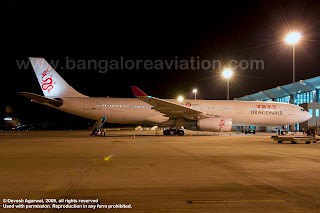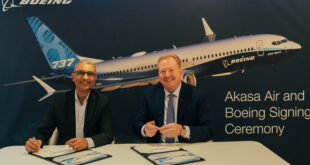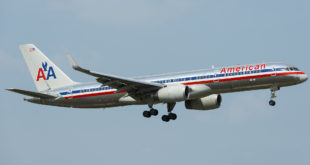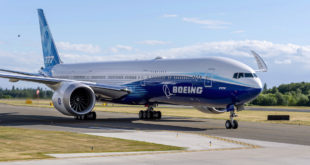At the Paris Air Show, as expected, US airframer Boeing has launched the 787-10 Dreamliner, the third member of the 787 family. The second member of the family, the 787-9, is in final assembly in Everett, Washington, USA, and is set to make its first flight later this year.
Video and analysis at the end of the article.
Final assembly and flight testing of the 787-10 are expected to begin in 2017 with the first delivery targeted for 2018.
The 787-9 will seat between 250~290 passengers depending on the airline’s configuration choices, with a range of 8,500 nautical miles (15,750 km), and a MTOW (Maximum Take Off Weight) of 250,830 kgs (553,000 lbs). The 787-10 has the same MTOW as its shorter variant the 787-9, and will trade range for increased passenger capacity. The 787-10 has a range up to 7,000 nm (12,964 km), with seating for 300~330 which puts it head-on against the Airbus A350-900 XWB which underwent its first flight just last week.
Boeing is banking on the lighter weight of the 787-10 off-setting the range limitations in winning orders. The 787-10 would be used on high demand routes of up to 10 hours making it ideal for trans-Atlantic flights and long regional flights. India to Europe, Middle-East to Europe, Far East, and South-East Asia to Australasia, Northern Asia, etc.
This performance envelope gives good insight to the launch customers for the aircraft and the 102 airplane commitments received by Boeing. Air Lease Corporation (ALC), with 30 airplanes; GE Capital Aviation Services (GECAS), with 10; International Airlines Group / British Airways, with 12 subject to shareholder approval; Singapore Airlines, with 30 and United Airlines, with 20 airplanes.
Boeing 787-10 launch video
[bsu_youtube_advanced url=”https://www.youtube.com/watch?v=_XUcKoXzBb8″ width=”640″ height=”360″ controls=”alt” autohide=”yes” showinfo=”no” rel=”no” modestbranding=”yes” theme=”light”]Boeing 787-10 will compete with the Airbus A330-300
We expect the Boeing 787-10 to serve as Boeing’s answer to the wildly successful Airbus A330-300.
The A330-300 initially competed with the Boeing 777-200A (the non-ER variant), but over the past decade, beat the first 777 variant outright.
 |
| Cathay Pacific group is the largest operator of the A330-300 |
For almost every mission under 5,000 nautical miles, the A330-300 carries more payload at a lower seat-mile cost than any other airframe of its size on the market. Thus, for any airline who didn’t need the range of the 777-200ER, the A330-300 became the aircraft of choice, and at 613 orders and 424 deliveries for this variant alone, one can see it is a huge market. The delays with the 787 program only benefitted the A333 program more, and Airbus won hundreds of orders in the last three years and still possesses a backlog of 187 frames.
The A333 has been especially popular with Asian carriers looking to use it for regional routes within Asia, like Singapore Airlines retiring its fleet of 777-200s in favour of A330-300s, and for carriers with large trans-Atlantic operations. The world’s largest A333 operator is the Cathay Pacific / DragonAir group, which also uses the large belly space of the aircraft for cargo.
The 787-10 will give Boeing the upper hand in this market segment, and we estimate with potential sales of 700 aircraft long term.
The 787-10 can lift a higher payload than the Airbus A330-300, and has a maximum take-off weight of 250,830 kg versus 240,000 for the A330-300. The 787-10 will also have 600 more nautical miles of range than the A330-300, and 1,047 cubic feet of additional cargo space (18.9%), making it especially attractive to Asian carriers for whom strong cargo demand on regional routes is a big driver behind using wide-body aircraft for such flights.
From an operating cost perspective, the 787-10 is a new generation aircraft with updated technology. High composite light weight body, new wing shape, and bleedless and high bypass enginers. It could offer up to 20% savings on operating costs compared to the A330-300, and for an industry that loves even a 2% reduction, this would be huge.
We can also expect most operators to further reduce seat-mile costs by opting for the bone crunching nine-abreast narrow (17.2″) seating, which can be justified on the shorter flights that will be operated by the 78J (time-table designation for the 787-10), in comparison, the eight abreast seating on the A330-300 offers 18″ seat widths. (AirAsia X uses a nine abreast 16.5″ seating on its Airbus A330s and A340s).
Airbus will naturally try to narrow this gap by offering better discounts on the A330, but the largest A330-300 operators like Cathay Pacific/DragonAir, China Airlines, Thai Airways, Delta, and Lufthansa can expect strong sales pitches from Boeing very soon.
 Bangalore Aviation News, Reviews, Analysis and opinions of Indian Aviation
Bangalore Aviation News, Reviews, Analysis and opinions of Indian Aviation


